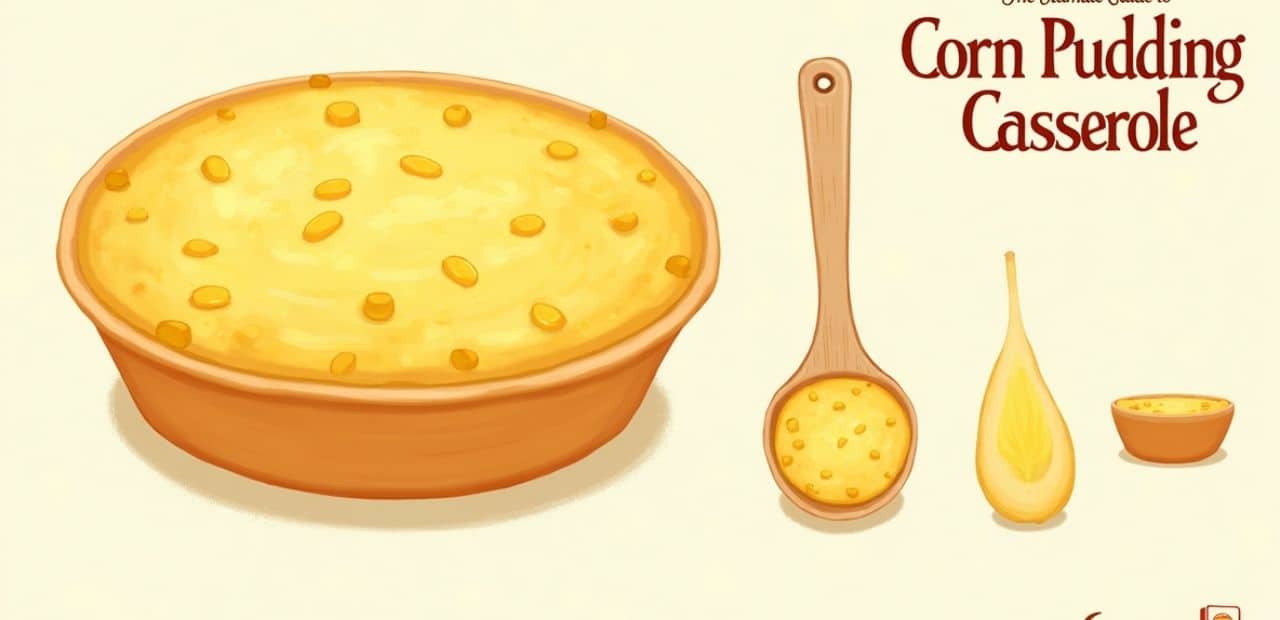Corn pudding casserole, a beloved staple in many households, is more than just a side dish. It’s a rich, creamy blend of flavors that can elevate any meal. In this article, we’ll explore the history, preparation methods, and variations of this comforting dish. Whether you’re a professional chef or a home cook, you’ll find valuable insights and tips here.
Corn pudding casserole has deep roots in American cuisine. It’s a dish that often brings nostalgia, evoking memories of family gatherings and holiday feasts. Despite its simple ingredients, the flavors intertwine in ways that can surprise even the most seasoned palates. Let’s dive deeper into what makes this dish so special.
Origins and Cultural Significance
The origins of corn pudding can be traced back to Native American cooking. Corn, or maize, was a staple in their diet, and various forms of corn dishes have existed for centuries. Over time, European settlers adopted these methods, blending them with their culinary traditions.
In the Southern United States, corn pudding became particularly popular. It’s often served at Thanksgiving and other festive occasions. This dish represents comfort and warmth, making it a go-to for family gatherings. The texture is key; it should be soft yet firm enough to hold its shape when served.
Ingredients: The Building Blocks of Flavor
To make an authentic corn pudding casserole, you’ll need several key ingredients. The base usually includes:
- Corn: Fresh, frozen, or canned corn works well. Fresh corn provides a sweet crunch, while frozen is convenient and still flavorful.
- Milk and Cream: These add richness. Use whole milk for a creamier texture.
- Eggs: They act as a binder. They help the casserole hold its shape.
- Sugar: A touch of sugar enhances the natural sweetness of the corn.
- Cornmeal: This gives the casserole its signature texture. It also thickens the mixture.
- Butter: Adds richness and flavor. Don’t skimp here!
You can also incorporate cheese, herbs, or spices for additional layers of taste. Some folks like to add jalapeños for a kick. Get creative!
Preparation: Techniques for Success
Making corn pudding casserole is relatively straightforward. Start with preheating your oven to 350°F (175°C). This ensures even cooking.
In a large bowl, combine your corn, milk, and cream. Whisk in the eggs until well blended. Then add the sugar, cornmeal, and melted butter. Mix until smooth. Remember, a few lumps are okay; they often dissolve during baking.
Transfer the mixture into a greased casserole dish. For an extra touch, sprinkle some cheese on top before baking. It creates a delightful crust.
Bake for about 45 minutes, or until the top is golden brown and a knife inserted in the center comes out clean. Allow it to cool slightly before serving. This dish is best enjoyed warm.
Common Misconceptions
Many people confuse corn pudding with corn souffle. While they share some similarities, they’re distinct. Corn pudding is denser and more custard-like, whereas corn souffle is lighter and airier due to additional whipped egg whites.
Another misconception is that corn pudding must be sweet. While many recipes include sugar, savory versions exist as well. Garlic, cheese, and herbs can transform this dish into a savory delight.
Variations to Try
Corn pudding casserole is incredibly versatile. Here are a few variations you might consider:
Cheesy Corn Pudding
Adding cheese can enhance the flavor dramatically. Cheddar is a popular choice, but you could experiment with pepper jack or even feta for a unique twist.
Spicy Corn Pudding
For those who like a bit of heat, mix in diced jalapeños or a dash of cayenne pepper. This adds an exciting kick that complements the sweetness of the corn.
Herb-Infused Corn Pudding
Fresh herbs like thyme or rosemary can elevate the dish. They bring a fragrant aroma and a depth of flavor that pairs beautifully with the corn.
Vegan Corn Pudding
With the rise of plant-based diets, vegan adaptations are gaining popularity. Substitute eggs with flaxseed meal mixed with water and use almond milk instead of dairy. The result is still rich and satisfying.
Nutritional Insights
Corn pudding can be both delicious and nutritious. Corn is a good source of fiber, vitamins, and antioxidants. Whole grains, like cornmeal, provide essential nutrients. However, it’s important to be mindful of portion sizes, especially with cheese and butter added.
For a healthier take, consider reducing the sugar or using alternative sweeteners. It’s all about balance.
Serving Suggestions
Corn pudding casserole is a versatile dish that pairs well with many main courses. It complements roasted meats, grilled chicken, or even vegetarian options like stuffed peppers.
Consider serving it alongside a fresh salad. The crunch and acidity of a salad counterbalance the creaminess of the casserole beautifully.
Conclusion: Embracing the Comfort
Corn pudding casserole is more than just a dish; it’s an experience. It holds a special place in many hearts and kitchens. As we’ve explored, there’s so much versatility within this dish.
From its historical roots to modern variations, corn pudding continues to adapt while retaining its charm. Use this guide to experiment, innovate, and enjoy this comforting classic.
As you make your own corn pudding casserole, remember: it’s not just about following a recipe. It’s about embracing creativity in the kitchen. Enjoy the process, and share it with loved ones.

Emily Rose Johnson is a talented writer known for her captivating storytelling and evocative prose, creating unforgettable characters and compelling narratives in various genres.









